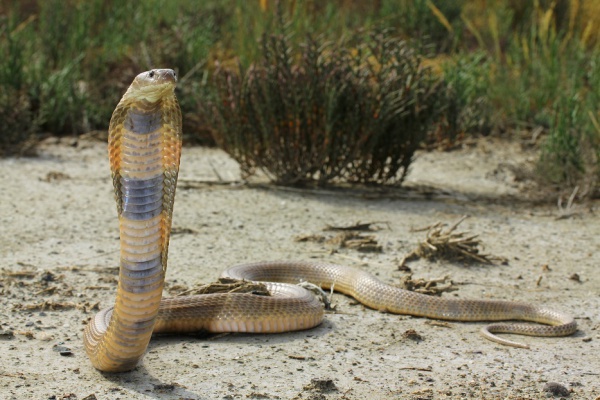Facts About Central Asian Cobra
The Caspian cobra, also known by several names such as the Central Asian cobra, ladle snake, Oxus cobra, or Russian cobra, is a venomous species belonging to the family Elapidae. Scientifically named Naja oxiana, this medium-sized snake is indigenous to Central Asia, easily identifiable by its distinctive hood, elliptical head, and unique color patterns. One can differentiate it from the Indian cobra by examining specific physical characteristics and counting its scales.
The Caspian cobra is found in countries such as Turkmenistan, Uzbekistan, Kyrgyzstan, Tajikistan, Afghanistan, Iran, Pakistan, and parts of India. It prefers arid, rocky habitats and can thrive up to 3,000 meters above sea level. Although primarily diurnal, it can also be active during dawn or dusk, particularly in extremely hot weather conditions.
When threatened, the Caspian cobra can exhibit considerable aggression. It will spread its hood, hiss, and strike in self-defense. Its diet mainly includes small mammals, amphibians, birds, and fish, with a particular preference for rodents. This snake is also an adept climber and swimmer, often residing near water sources.
The venom of the Caspian cobra is highly potent, comprising neurotoxins and cytotoxins that can cause severe pain, swelling, muscle weakness, paralysis, and even respiratory failure. Without prompt medical intervention and antivenom administration, a bite can be fatal, underscoring the critical need for immediate medical treatment.
Research indicates that the venom of the Caspian cobra is among the most potent of all cobra species. Consequently, specific antivenom treatments have been developed to counteract its effects. Due to the high mortality rate associated with its bites, continuous research and advancements in medical treatments are essential to reducing fatalities in regions where the Caspian cobra is prevalent.

 Afghanistan
Afghanistan